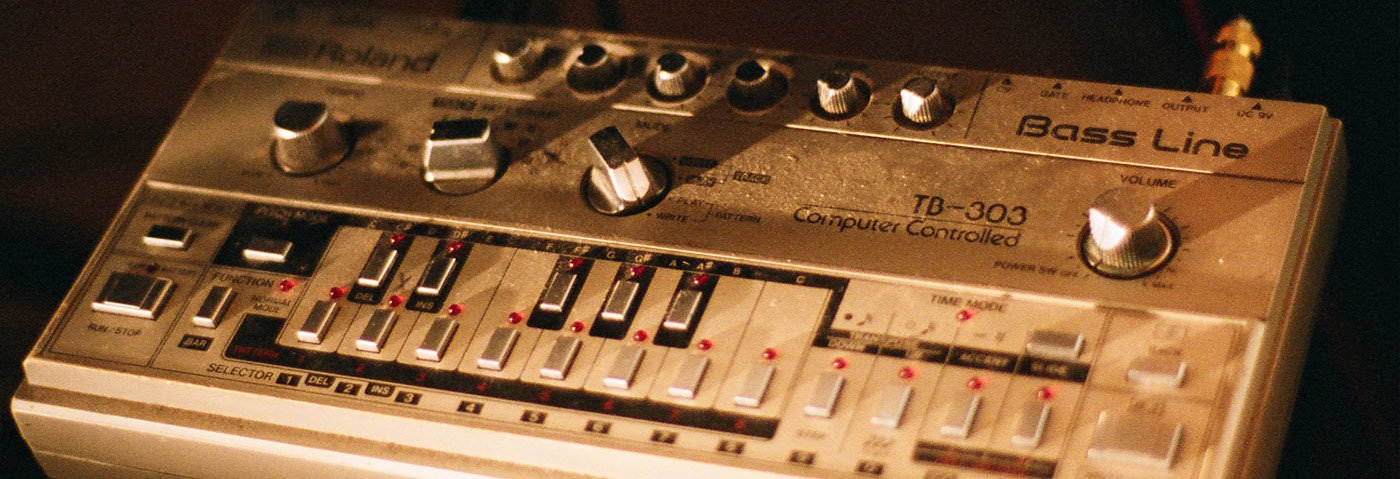
u-he are makers of award-winning software synthesisers and effects including Diva, Repro-1, Zebra2, Hive, Bazille, Presswerk and Satin.
Visit U-he

u-he are makers of award-winning software synthesisers and effects including Diva, Repro-1, Zebra2, Hive, Bazille, Presswerk and Satin.
Visit U-heSynth Secrets is a series of programming tutorials in which we show how to make a range of classic and new synth sounds using plugins such as Massive, Sylenth and Diva.
In this instalment of Synth Secrets we’ll look at creating a relatively simple acid sound using U-He’s Diva plugin. Taking inspiration from the classic Roland TB-303, we’ll also look at a couple of different ways to set the synth up for variations on the sound.
Here’s an audio example of the synth we’ll be creating:
And here’s a screenshot of the MIDI pattern we’ve used for the melody:
We begin by loading a new instance of Diva. We head straight to the Patches tab and initialise the patch by selecting the ‘INIT Minimono’ preset from the Templates section.
Heading back to the main synth section, we turn up the feedback control in the mixer section to a third in order to add bite, then in the VCF (voltage-controlled filter) section we push up the emphasis (resonance) control and increase the cutoff frequency. Setting the resonance this high creates those distinctive resonant sweeps when moving the cutoff frequency up and down, synonymous with the acid sound.
In the tuning section we turn up the first glide control to a third of the way, then in the section underneath we change the mode from legato to mono. Increasing the glide time creates the pitch transition between notes, so the synth bends from one note to the next for that classic 303-style effect – how high you go with the glide control is of course up to taste, and dependent on the source material.
Changing the mode to mono means the synth will only play one note at a time, however we still have glide between all notes. If you keep the synth in legato mode then there will only be glide between notes that overlap. Here are examples of how both sound with our MIDI clip:
Now time to add some distortion. As we’re using Ableton we load up the Overdrive device on our synth (whatever DAW you’re working in, the native distortion plugins will do the trick nicely here).
The effect instantly sounds pleasing, so all we do is increase the drive setting slightly to 63% and push up the tone control to 60%, adding extra distortion and increased high end respectively.
Distortion and overdrive plugins will usually react very differently depending on what frequencies are being fed into them – the high resonance values we set on the synth create a spike in the frequency response of the synth, especially when we sweep the cutoff, creating that classic driven acid tone.
Now it’s time to experiment with what we’ve created so far to explore more creative potential. From the MIDI Effects section in Ableton, we load an Arpeggiator device onto our MIDI channel.
We set the Rate to 1/16, bring the Gate control down to 47% and push up the Steps setting to 4. This arpeggiates the notes coming into the synth at a rate of 16th notes. Bringing down the gate shortens the envelope of each note and setting the steps to 4 means the notes are triggering over 4 octaves.
We also add the Ping Pong Delay device for some stereo movement on the sound, filling the gaps in between the notes. We tweak the EQ so the delay is only present in the high frequencies, bring down the Feedback to 37% and pull down the Dry/Wet control to 21%.
Back in Diva, we take the oscillator down an octave by changing the Range setting from 8’ to 16’’ in the oscillator (VCO) section. We also push up the emphasis control slightly for an increased resonant sweep as we automate the cutoff frequency.
For this final example we turn off the arpeggiator, and focus on Diva. In the VCO section, we change the waveform from a sawtooth to a square wave (the original TB-303 featured both a square and sawtooth wave, so both will sound authentic). We push up the Env 2 control in the filter section so that the second envelope is now controlling the cutoff frequency. We also dial down the emphasis control slightly, giving us a nice variation on the previous sound.
4th July, 2016

u-he are makers of award-winning software synthesisers and effects including Diva, Repro-1, Zebra2, Hive, Bazille, Presswerk and Satin.
Download the demos and try them for yourself at www.u-he.com
Attack Magazine is funded by advertising revenue. To help support our original content, please consider whitelisting Attack in your ad blocker software.
x
08.27 PM
More synth secrets!
09.00 AM
Mord TB- 303 DAW Tutorial’s and all Abort ACID- House… great Page
07.24 AM
Fantastic tutorial. Thank you for this.
08.08 PM
This tutorial is gold! Keep it coming
09.04 AM
No audio examples?
03.54 AM
man that kick was sick